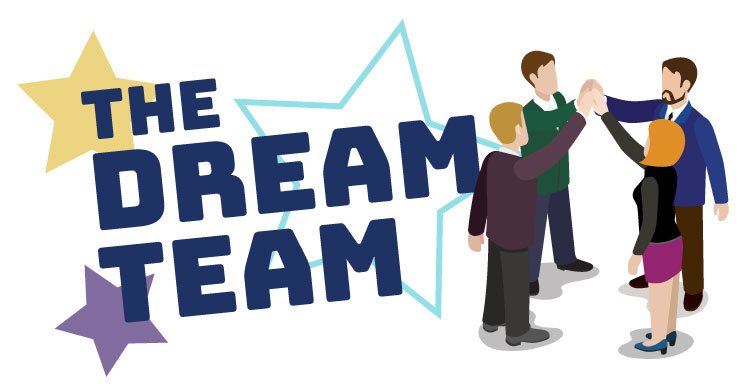“We really need to get together now and make a big push.” —Peter Jones
Up until about ten years ago, most cancer researchers and institutions would work in direct competition with one another, trying to be the first one to come up with life-saving treatments. Undoubtedly, they worked diligently and passionately, every day laboring over one of the most critical challenges in our society, and doing all this in isolation and in direct competition with other individuals committed to the same cause. Yet, this is the way research had always been done, and in many ways, it made sense to some of the world’s most talented individuals and respected institutions.
More recently, through organizations such as Stand Up to Cancer, there has been a push to form “dream teams” of researchers and institutions all working together toward a common goal. One of the leading researchers, Dr. Peter Jones, put it this way: “There’s a time for individual competition and a time for teamwork. And I think this is the time for teamwork.” Their efforts have resulted in countless advances that have potentially saved the lives of millions of cancer patients around the world.
How is this relevant to schools? I recently heard a former principal touting the progress and achievements of his school by comparing it to that of his “rival” school in the same school district! Isn’t it time we as educators stop working alone and instead learn from one another and share our successes as well as our struggles, in order to help more students?
I completely understand that a small percentage of schools and districts are in direct competition with other schools for their financial survival. Fortunately, for most students around the country, schools are not in direct competition with one another. Therefore, district officials who are seeking to become true professional learning communities must establish a culture that fosters districtwide collaboration rather than competition. Just like in the field of cancer research, the time has come to work together and push ourselves to form or identify dream teams among our staff in the district.
If we are truly committed to the philosophy of ensuring the success of all students in the district, it is disingenuous to allow schools to flourish on one side of the district while other schools struggle. The cost of this sort of practice on our students is just too great.
Laying the Foundation for Dream Teams
Therefore, district and building leadership teams must first come together and establish three things:
- The non-negotiables stemming from the 3 Big Ideas
- Assurances in terms of support from the district
- A clear method for assessing a building’s progress
Only then can they fully utilize the dream teams to further enhance and support teams who are struggling.
The Non-Negotiables
In a typical scenario, school districts don’t have problems gaining consensus around the conceptual framework of the 3 Big Ideas, but rather struggle to establish the non-negotiables that essentially put them into practice. Therefore, school districts must work to ensure that schools focus on learning by working toward implementing clarity over the knowledge, skills, and dispositions that all students must acquire as a result of a specific grade level or course. Teams would then work collaboratively to answer the questions: how will we know if our students are learning, how will we respond when students don’t learn, and how will we enrich and extend the learning for students who are proficient? Along the way, dream teams can serve as valuable facilitators in helping teams to hear different ideas as well as strategies from their own colleagues in an effort to resolve the angst that comes with change.
District Support
As staff members work toward implementing PLC principles or becoming more effective, dream teams can also help in terms of resources, training, and ongoing support. As district leaders expect higher levels of performance and accountability, they must also be prepared to provide teams with the “capacity to meet that expectation” (Elmore, 2004, p. 93). Yet, we often leave teams to work in isolation to solve their problems, rather than increasing the level of support. Consider the possibility of periodic visits to teams, in which dream team members would offer insight or resources from their own teams. Periodic forums to showcase best practices can also be helpful in developing stronger teams and fostering a more collaborative environment.
Clear Assessment
Every school district focused on implementing or improving their work on becoming a true professional learning community must be hungry for evidence of student learning. Yet, this can’t occur if there is any ambiguity in the method or process for assessing the building’s progress. Over the years, I have seen that it is natural for some people to form different or unique definitions of what constitutes success when there is no guidance. Therefore, it is critical for district leaders to establish and support the key priorities, but they should also be “vigilant in monitoring the degree to which the priorities are understood and acted on throughout the District” (DuFour & Marzano, 2011, p. 34). Regularly establishing feedback opportunities with both the building administrators and dream teams can help ensure that every school is making progress on the key outcomes.
For far too long, we have underutilized the full capacity and talent that every school and district has within by not developing dream teams to facilitate the work. In some ways, we too have inadvertently created the conditions for competition at the expense of many students. Now is the time for our own educational dream teams to come together and help in the effort to ensure that all students experience success.
References:
DuFour, R., & Marzano, R. (2011). Leaders of Learning: How District, School, and Classroom Leaders Improve Student Achievement. Bloomington, IN: Solution Tree.
Elmore, R.F. (2004). School Reform from the Inside Out: Policy, Practice, and Performance. Cambridge, MA: Harvard Education Press.
[author_bio id=”137″]






